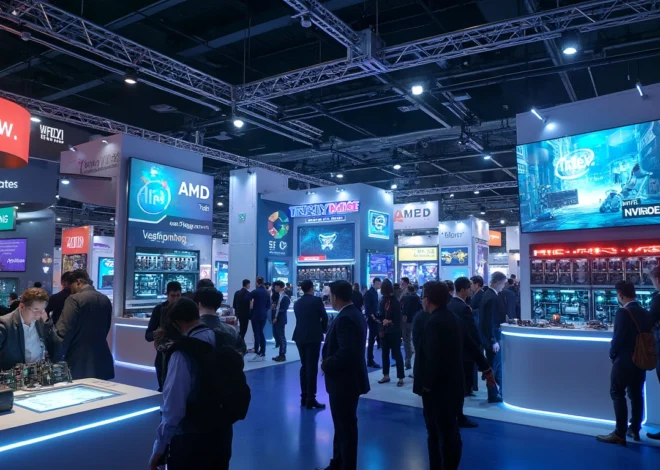
AI and Quantum Computing Transform Cybersecurity Landscape in 2025
The cybersecurity landscape in 2025 will be marked by unprecedented challenges as AI-powered threats become more sophisticated and quantum computing emerges as both a security risk and solution. The convergence of advanced technologies with traditional security concerns creates a complex environment where organizations must adapt their defense strategies while managing an expanding attack surface.
Table of Contents
Key Takeaways:
- AI and machine learning will be at the forefront of both cyber attacks and defense mechanisms
- The rise of quantum computing will force a complete overhaul of current encryption standards
- IoT devices and smart infrastructure will create an expanded attack surface requiring new security approaches
- Organizations will face increased challenges from sophisticated social engineering attacks and deepfakes
- The cybersecurity skills gap will drive greater adoption of automated security solutions
The Evolution of AI-Driven Security Threats
As we approach 2025, AI-driven cyberattacks are becoming increasingly sophisticated. Malicious actors are using artificial intelligence to automate and enhance their attack strategies, making them harder to detect and prevent. Recent sophisticated phishing attacks demonstrate how AI can be used to create more convincing and targeted campaigns.

Quantum Computing’s Impact on Cybersecurity
The advent of quantum computing presents both opportunities and challenges for cybersecurity. Current encryption methods will become vulnerable to quantum attacks, pushing organizations to develop and implement quantum-resistant cryptography. This technological shift will require significant investments in new security infrastructure and expertise.
IoT Security Challenges
The proliferation of IoT devices continues to expand the attack surface for cybercriminals. Mobile device security becomes increasingly critical as more devices connect to corporate networks. Organizations need to implement comprehensive security measures to protect against vulnerabilities in connected devices.
Advanced Social Engineering Tactics
Social engineering attacks are evolving with technology. Deepfake technology and AI-powered impersonation will make it harder to distinguish legitimate communications from fraudulent ones. New forms of malware are already showing signs of this sophisticated approach to targeting users.
Addressing the Cybersecurity Skills Gap
The shortage of qualified cybersecurity professionals remains a significant challenge. Organizations are turning to automation solutions like Latenode’s security automation platform to enhance their security operations. These tools help bridge the skills gap by automating routine tasks and allowing security teams to focus on more strategic initiatives.
Zero Trust Architecture Implementation
The adoption of Zero Trust architecture will become standard practice as organizations recognize that traditional perimeter-based security is insufficient. This approach requires continuous verification of every user and device, regardless of location or network connection.
Cloud Security Evolution
As businesses continue their digital transformation, cloud security becomes paramount. Organizations will need to implement more sophisticated cloud security measures to protect their data and applications while maintaining compliance with evolving regulations.
Ransomware Defense Strategies
The threat of ransomware continues to evolve, with attackers using more sophisticated techniques to target critical infrastructure and large organizations. Companies will need to implement comprehensive backup strategies and incident response plans to mitigate these risks.


